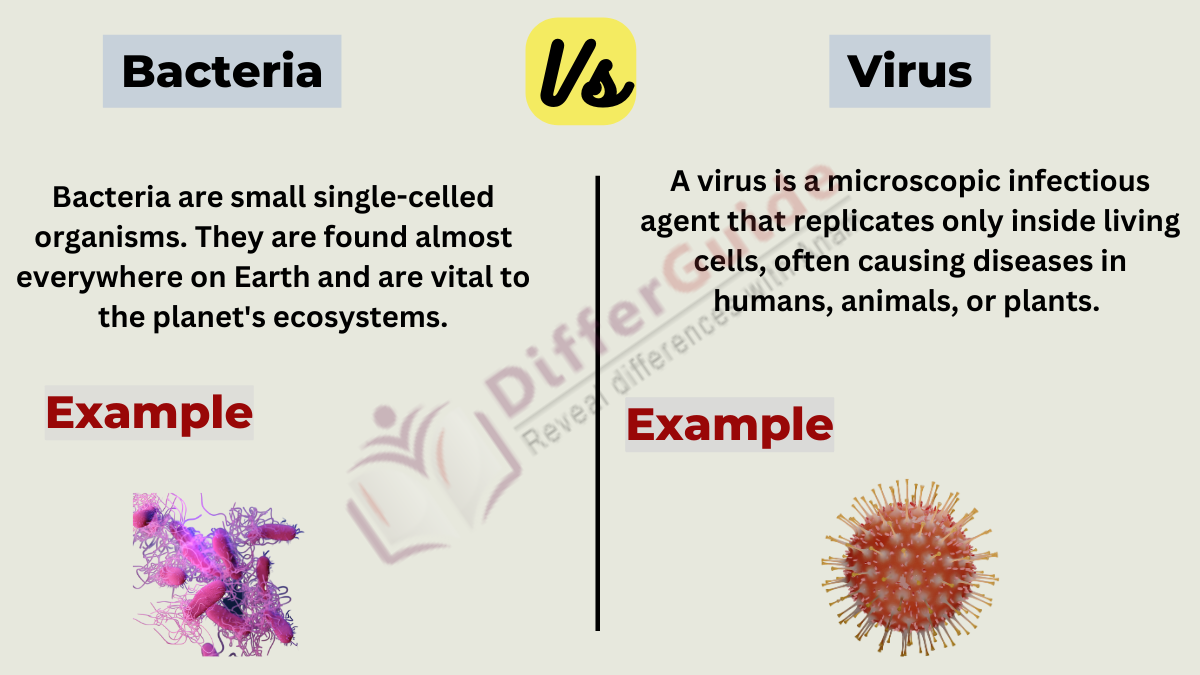Bacteria are single-celled microorganisms that can live independently, reproduce on their own, and have complex cellular structures. Rather Viruses are non-living infectious agents composed of genetic material (DNA or RNA) surrounded by a protein coat and require a host cell to replicate.

In this article, we will discuss the difference between bacteria and viruses. We will also give deep insight into separately on both.
What are bacteria?
Bacteria are microscopic single-celled organisms that belong to the domain of prokaryotes, lacking a nucleus and membrane-bound organelles.
They are classified as a distinct kingdom within the biological classification system. Bacteria are incredibly diverse and can be found in various environments, including soil, water, and the human body.
What is a virus?
A virus is a microscopic infectious agent that replicates only inside living cells, often causing diseases in humans, animals, or plants. It consists of genetic material (DNA or RNA) surrounded by a protein coat.
Viruses rely on infecting living host cells to replicate and spread, causing a wide range of diseases in humans, animals, plants, and microorganisms. Vaccines and antiviral medications are essential tools in combating viral infections.
Bacteria vs virus
The key difference between bacteria and viruses is given below:
| Bacteria | Virus | |
| Cellular Structure | Prokaryotic cells (single-celled organisms with no nucleus) | Non-cellular particles (composed of genetic material wrapped in a protein coat) |
| Size | Generally larger (ranging from 0.2 to 10 micrometers) | Generally smaller (ranging from 20 to 400 nanometers) |
| Living or Non-living? | Considered living organisms | Considered non-living (cannot carry out metabolic functions on their own) |
| Replication | Can replicate on their own through binary fission | Require a host cell to replicate |
| Genetic Material | Contain DNA and/or RNA | Contain either DNA or RNA (not both) |
| Metabolic Abilities | Can carry out various metabolic processes independently | Lack of metabolic machinery and depending on the host cell’s metabolic processes |
| Response to Antibiotics | Some bacteria can be treated with antibiotics | Antibiotics are ineffective against viruses |
| Diseases Caused | Can cause a wide range of diseases, such as pneumonia, tuberculosis, and urinary tract infections | Can cause diseases such as the common cold, influenza, HIV, and COVID-19 |
| Examples | E. coli, Streptococcus, Salmonella | Influenza virus, HIV, SARS-CoV-2 (COVID-19) |
